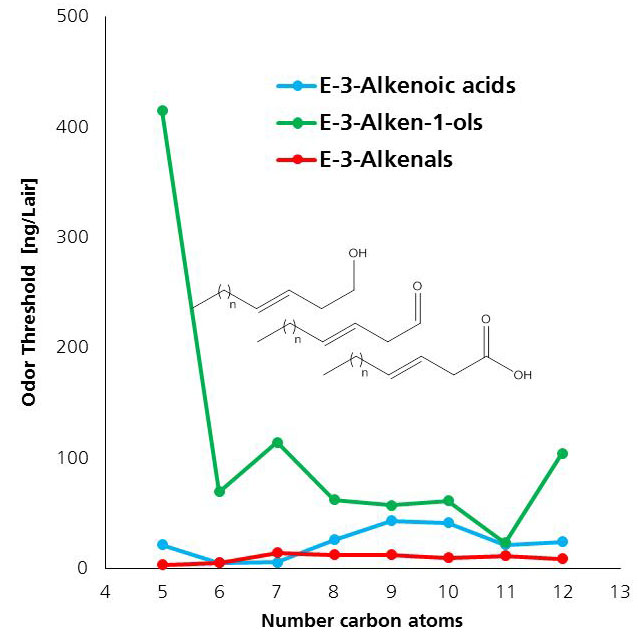Structure-effect relationship models
Structure-effect relationships refer to the qualitative and quantitative relationships that exist between the chemical structure of substances and their properties and biological effects. Using experimental data, mathematical models are being developed to describe and predict the biological activity of molecules. By acquiring knowledge about the effects and mechanisms of chemical substances in biological systems, it is possible, for example, to develop new compounds having defined bioactivity.
Effect of odors
Odorants are present in most natural substances and are important not only for the attractiveness of foods but also for chemo-communication. A key aspect of our research is the systematic identification of odors and in particular their effect on people. The precise mechanisms of odor perception in humans are still unclear and existing models and theories do not allow the odor of a substance and its characteristics to be predicted from its chemical structure. The use of structure-effect relationships in odor research does, however, open up new opportunities for this.
Identification of the relationship between chemical structure and odor
Systematic analysis of the relationships between chemical structure and odor aids more detailed understanding of our sense of smell and offers the possibility of discovering and developing hitherto unknown odorants having novel odor properties. By studying homologous series of odor-active compounds and by varying the substitution pattern of phenol derivatives it has already been possible to identify a dependence of the odor threshold and odor characteristics on the chemical structure.
 Fraunhofer Institute for Process Engineering and Packaging IVV
Fraunhofer Institute for Process Engineering and Packaging IVV